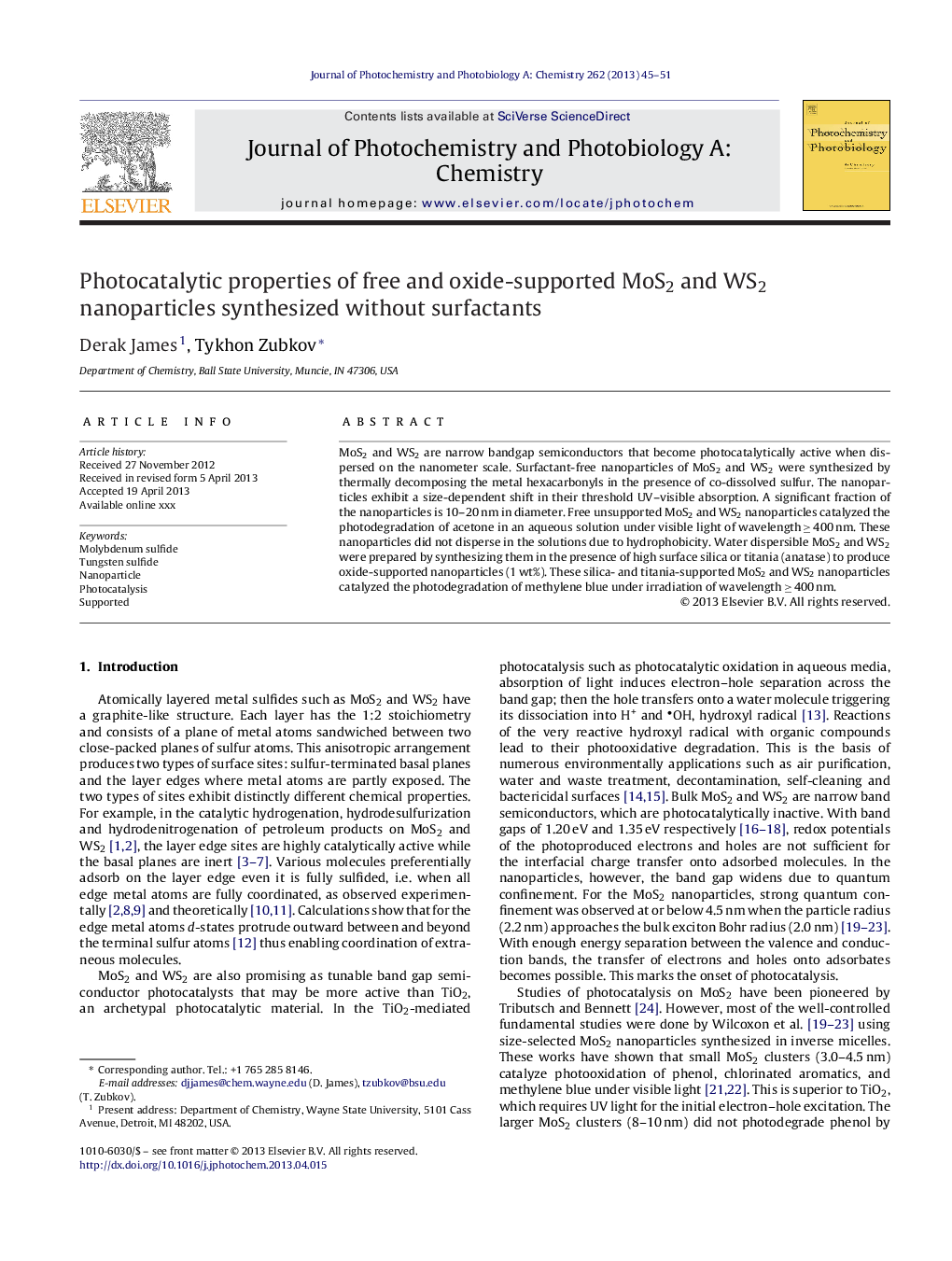| Article ID | Journal | Published Year | Pages | File Type |
|---|---|---|---|---|
| 6493008 | Journal of Photochemistry and Photobiology A: Chemistry | 2013 | 7 Pages |
Abstract
MoS2 and WS2 are narrow bandgap semiconductors that become photocatalytically active when dispersed on the nanometer scale. Surfactant-free nanoparticles of MoS2 and WS2 were synthesized by thermally decomposing the metal hexacarbonyls in the presence of co-dissolved sulfur. The nanoparticles exhibit a size-dependent shift in their threshold UV-visible absorption. A significant fraction of the nanoparticles is 10-20 nm in diameter. Free unsupported MoS2 and WS2 nanoparticles catalyzed the photodegradation of acetone in an aqueous solution under visible light of wavelength â¥Â 400 nm. These nanoparticles did not disperse in the solutions due to hydrophobicity. Water dispersible MoS2 and WS2 were prepared by synthesizing them in the presence of high surface silica or titania (anatase) to produce oxide-supported nanoparticles (1 wt%). These silica- and titania-supported MoS2 and WS2 nanoparticles catalyzed the photodegradation of methylene blue under irradiation of wavelength â¥Â 400 nm.
Related Topics
Physical Sciences and Engineering
Chemical Engineering
Bioengineering
Authors
Derak James, Tykhon Zubkov,
